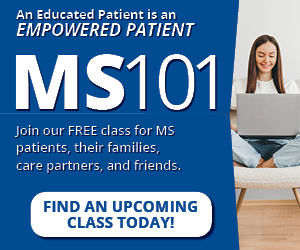If you’re living with MS, there are a few ways that you can be a good patient and improve your outcomes. One of them is to get regular care from your neurologist and follow your treatment plan. Another way to give yourself the best shot at maintaining the quality of life you want is through your lifestyle and habits.
Stay-at-home orders, combined with the desire to keep hospitals and doctors offices free of non-emergency patients and non-essential staff, caused many clinics — including the Rocky Mountain MS Center at University of Colorado — to turn to technology when conducting patient visits.
The concept of Telehealth has been around for a while — as videoconferencing technology developed, the medical community began to see the possibilities for the future. But the complex nature of medical visits, insurance reimbursements, privacy concerns and more have slowed the widespread launch of Telehealth programs.
COVID-19 pushed many Telehealth programs into high gear. In doing so, we’ve both proved the concept works, and identified problems that still need to be addressed before Telehealth truly becomes the norm.
We asked RMMSC at CU Co-Directors Dr. Timothy Vollmer and Dr. John Corboy, as well as Clinic Director Dr. Enrique Alvarez, for their insight on their recent experiences with Telehealth. Here are some of their thoughts:
The positives:
- Decreases the stress and costs to the patient and family, related to managing their disease
- Great format for brief, focused visits and for routine check-ins
- Allows doctors to maintain contact, safely, with as many people as possible
- Easy to schedule short follow-ups that take less time than a usual appointment
- Can reach patients from a long distance without the need to travel
And the downsides:
- Some patients have experienced technical issues
- Patients don’t always understand how to prepare for their virtual visit
- Difficult to “bundle” with other visits — MRIs, infusions, blood draws, etc.
- Limitations in performing physical exams
Many of the limitations of Telehealth are just a matter of getting used to the technology and better preparing people for their virtual visits. For information on how you can help make the most out of your experience, please see our list of Telehealth tips.






